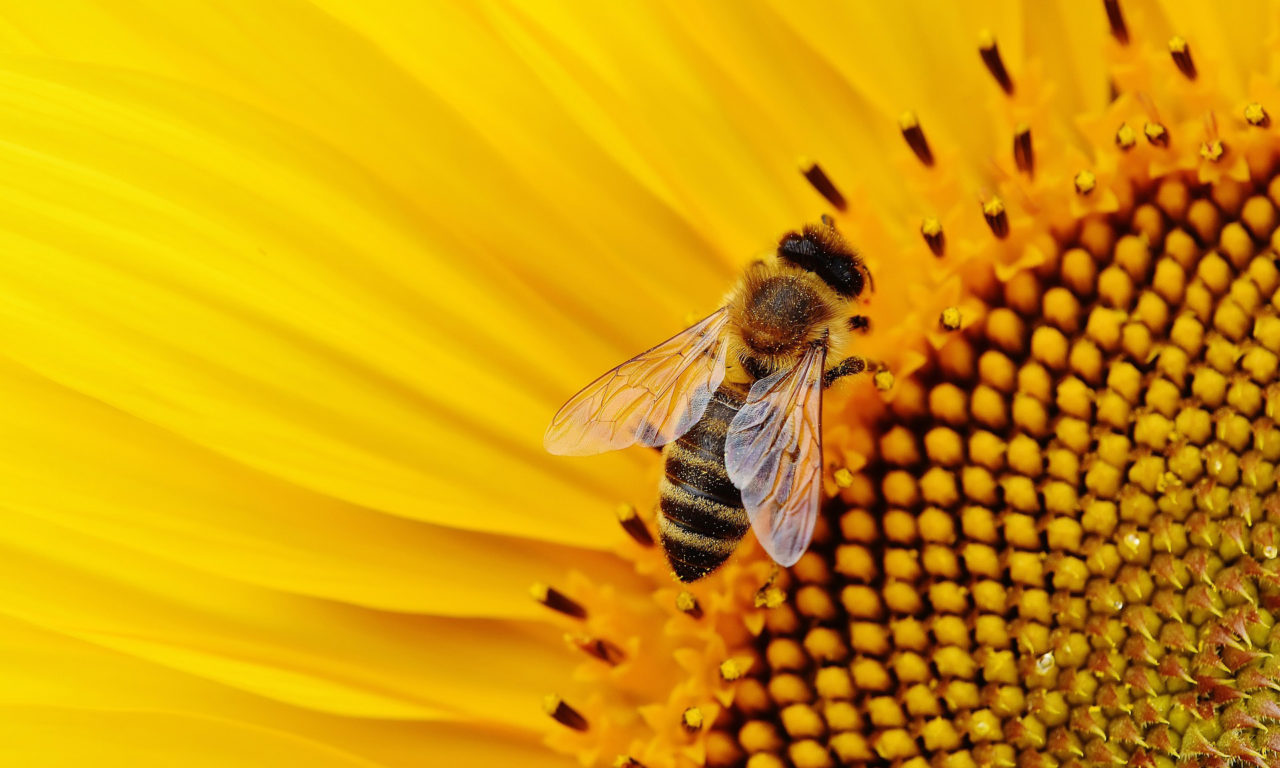Bees are very important animals (yes, animals) that contribute to the natural ecosystems around us. Colorado has more than 900 native bee species; about 562 of those live in Boulder County. Colorado is ranked the state with the fifth highest diversity of bees in the nation. Our neighbor, Utah, is ranked first.
Bees are important pollinators, meaning that they move pollen from flower to flower, resulting in the fruiting of that plant. This is a key element in producing many of our foods—think apples, berries, almonds, etc.
The honey bee, however, is not native to the United States, although many now live in the area. About 70 percent of Colorado’s bees are actually solitary, with each female building her own nest. There are six main families of bees that live in Colorado: Colletidae (plasterer bees), Halictidae (sweat bees), Andrenidae (mining bees), Melittidae (pretty rare, small family), Megachilidae (leaf-cutter, mason bees), and Apidae (honey, bumble, cuckoo, digger, and carpenter bees).
In Colorado, bees are active from late March through mid-October. Temperature has a big impact on their activity, as well as flowers available for pollen gathering. For honey bee keeping, this is especially true. Since honey bees aren’t native, they aren’t naturally drawn to the Boulder County native plant species, so managed crops are critical for their success. Many hives in Boulder County like to access alfalfa, sweet clover, linden, Russian olive, apple, and crabapple. Of course, the extreme weather changes here also present challenges such as limiting forage in the spring and cold spells that sometimes lead to starving hives. Like most other locations, Boulder County honey bees are susceptible to disease, virus, and the Varroa mite.
The spring of 2020 was particularly hard for local beekeepers and their hives, primarily because of the sudden freezes in April, which damaged much of the early spring bloom. The summer forage also depends on how the weather unfolds.
And if you have been curious about those mysterious Asian giant hornets, there is presently little to worry about. This species prefers low elevation, moist, woodland areas, and does not hitchhike well. While our wetter, lower beehives in other parts of the nation might be affected, Boulder County is currently not a place where this wasp is likely to thrive.
Bees vs. Wasps: How To Tell The Difference
Bees
- 4 short wings
- Hairy bodies
- Flattened plates used as pollen baskets on hind legs (called corbiculae)
- Pollen-carrying hairs on hind legs/abdomen (called scopa)
Wasps
- 4 long wings—long and slender
- Not distinctly hairy
- Body length usually 2-25mm
- Many have a slim waist, called a “wasp waist”
- Narrower bodies
- Do not carry pollen loads
How To Protect Our Bees
- Plant bee-friendly flowers and herbs in your garden/yard
- Don’t use chemicals or pesticides on your garden/lawn
- Buy local honey
- Create a bee bath—bees get thirsty!
- Teach others!
Plants That Attract Bees
- Blue Flax (Linum lewisii)
- Blue mist and firecracker penstemon (Penstemon eastorii and P. virens)
- Yarrow (Achillea millefolium)
- Showy milkweed (Asclepias speciose)
- Blanket flower (Gaillardia aristate)
- Rabbitbrush (Chrysothamnus nauseosus)
- Goldenrod (Solidago spp.)
- Common sunflower (Helianthus annuus)
- Hairy False Goldenaster (Heterotheca villosa)
- Rocky Mountain bee plant (Cleome serrulata)


